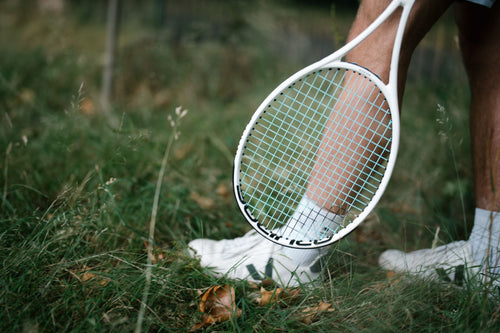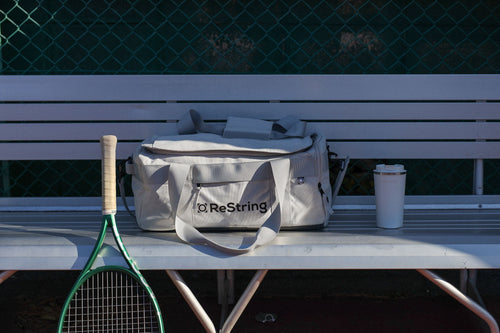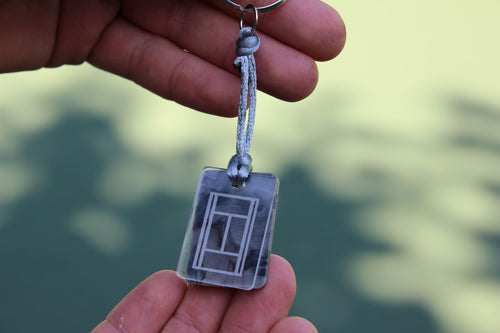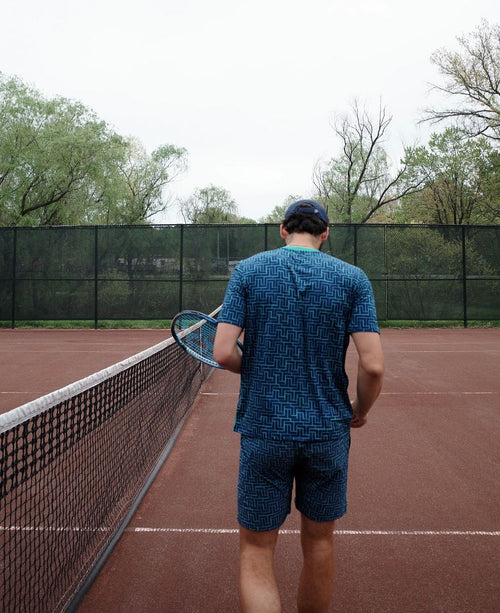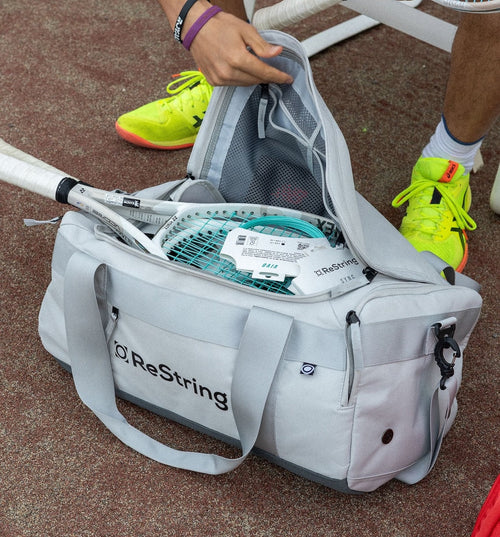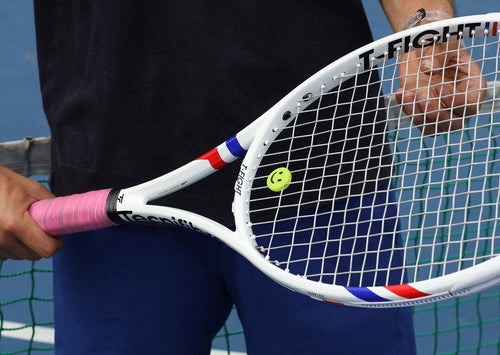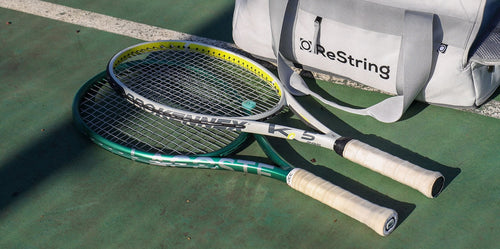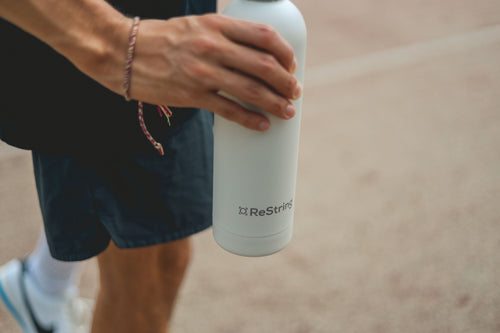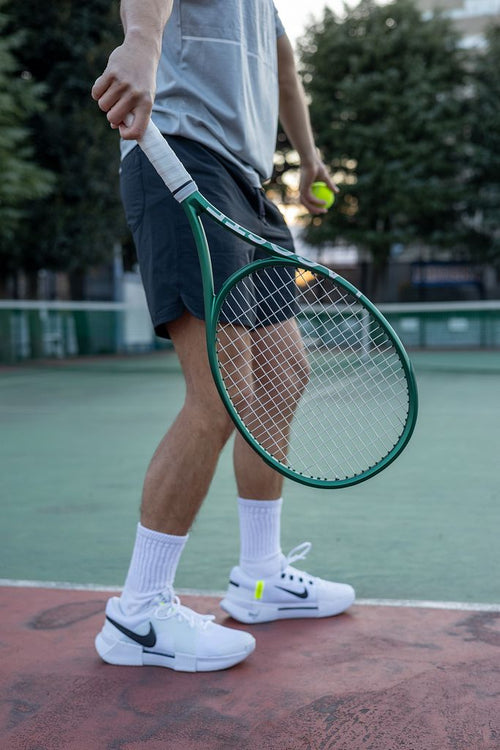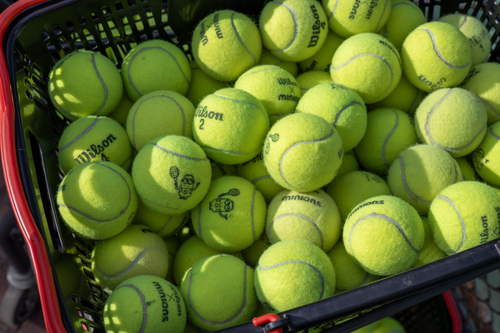Natural Gut vs Synthetic Gut Tennis Strings
Juan
Natural gut and synthetic gut may sound the same, but they are very different.
Natural gut is made from cow intestine and is the gold standard for feel and comfort. Synthetic gut is nylon and is a budget friendly all rounder.
In this article, we’ll go into more detail about how both were developed, a side-by-side comparison, how to choose between them and when to consider a hybrid.
What Natural Gut and Synthetic Gut Is Made From
Natural gut is the original tennis string made from purified cow intestine fibers.
It set the early benchmark for comfort and touch and it still does. That is unusual in sport since first versions are usually replaced by newer tech.
Synthetic gut arrived later. In the 1970s through the 1990s, brands tried to copy natural gut using solid core nylon with simple wraps.
Early versions missed the feel of real gut. Modern nylon is better, but is still far away from how natural gut feels and plays.
Ultimately, natural gut and synthetic gut are built from different materials and they behave differently on court. Treat them as different tools for different jobs.
Natural Gut and Synthetic Gut Comparison
Feel
Natural gut gives you a plush connected feel on every contact. The ball leaves the strings with a smooth sensation that is hard to replicate with anything else.
Synthetic gut feels ok for the price but it does not reach the same level of touch.
Power
Natural gut makes depth easy because it returns energy well and stays lively for longer.
Synthetic gut is also lively but it can feel a little less predictable as tension drops.
Spin
Natural gut generates spin primarily through its exceptional elasticity and snapback. However, it is not comparable to the spin levels generated by modern polyesters.
Synthetic gut tends to notch and lose tension faster, which increases friction, and limits snapback and spin.
Comfort
Natural gut is the benchmark for comfort. It is the most arm friendly choice if you are managing elbow or shoulder issues.
Synthetic gut is still comfortable compared with polyester but it is a bit firmer than gut.
Durability
Neither string is chosen for longevity.
Natural gut usually keeps its playing quality a little longer than synthetic gut because it holds tension well. If you want long play life, it is best to look at polyester.
Pricing
Natural gut costs more. Whether it is worth the price depends on how much budget you have.
Synthetic gut is cost effective and widely available which makes it a smart choice while you learn and play for fun.
How To Choose Between Natural Gut and Synthetic Gut
Natural gut
Choose natural gut in a natural gut and polyester hybrid if you want the best feel and comfort and you are willing to invest in a premium string.
Most advanced uses of gut today are in a hybrid setup. Novak Djokovic and Roger Federer both used gut and polyester hybrids for most of their careers.
Synthetic gut
Choose synthetic gut if you want a friendly affordable all rounder while you build your game.
Synthetic gut is the default stock string in many junior and pre-strung rackets for this reason. It is a friendly option for beginners who are building technique and simply want comfort.
It is a good fit for these cases, but its performance is not on the level of modern polyester or natural gut for advanced play. Don’t choose synthetic gut for performance purposes.
Natural Gut and Synthetic Gut Hybrids
Full beds of natural gut and synthetic gut are rare above beginner level because they cannot compete with polyester for spin and directional control.
That’s why intermediate, advanced and pro players can be seen playing with a hybrid that includes polyester to balance feel, comfort and performance.
If you use this approach, stick to a smooth round polyester so it slides on the gut rather than cutting into it. A shaped polyester can grate the softer string and make you string more often.
Sync is a round polyester with a special slick coating that pairs well in gut and polyester hybrids.
About the Author: Juan is the co-founder of ReString. He was born in Argentina, raised in Japan, and moved to the US to pursue college tennis. He now plays as an ATP & WTA hitting partner.

